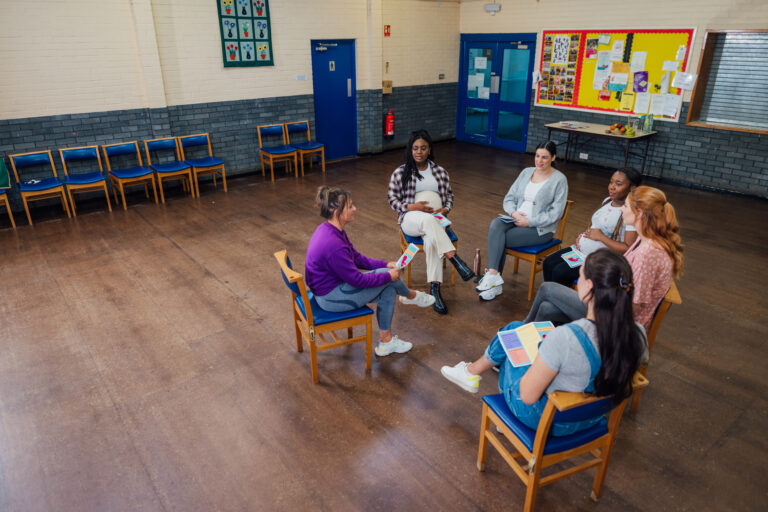In today’s educational landscape, it is crucial to create safe and supportive learning environments for all students. One group of students that requires special attention and care are those who have experienced trauma. Trauma can have a profound impact on a student’s well-being and ability to thrive academically. As educators, it is our responsibility to not only recognize and acknowledge these experiences but also to empower students to find their voices and promote their agency and resilience.
In this blog post, we will explore the concept of trauma-informed classrooms and how they can serve as a foundation for empowering student voices. We will delve into the importance of student agency and how it can be nurtured within a trauma-informed classroom. Additionally, we will discuss the role of teachers in creating an environment that supports student empowerment and resilience.
Firstly, we will examine the significance of student voice in the classroom. Allowing students to have a say in their education not only fosters a sense of ownership but also promotes engagement and motivation. We will explore various strategies that educators can implement to encourage student voices and create space for authentic expression.
Next, we will delve into the concept of student agency and its role in trauma-informed classrooms. Student agency refers to the belief in one’s capacity to take action and make meaningful choices. We will discuss techniques that can be used to foster student agency, empowering them to take control of their learning experiences and become active participants in the classroom community.
Furthermore, we will explore the concept of resilience and its significance in the context of trauma. Resilience refers to the ability to bounce back from adversity and develop effective coping mechanisms. We will discuss approaches that educators can employ to nurture resilience in students, helping them navigate the challenges they may face and thrive in the face of adversity.
Lastly, we will address the implementation of trauma-informed practices in the classroom. We will explore the need for such practices and provide practical steps that educators can take to integrate trauma-informed approaches into their teaching. We will also discuss the importance of monitoring and evaluating the impact of these practices to ensure their effectiveness.
By empowering students’ voices, promoting agency, and building resilience within trauma-informed classrooms, we can create an educational environment that supports the holistic development of all students. Join us as we delve into these important topics and discover strategies that can make a difference in the lives of our students.
Understanding Trauma-Informed Classrooms: An Introduction
Trauma-informed classrooms are educational environments that recognize and respond to the impact of trauma on students’ lives. These classrooms adopt a sensitive and supportive approach to address the needs of students who have experienced trauma, allowing them to feel safe, connected, and empowered in their learning journey.
The Impact of Trauma on Students
Trauma can have a profound impact on students’ physical, emotional, and cognitive well-being. Whether it stems from abuse, neglect, loss, or other adverse experiences, trauma can disrupt students’ ability to learn, regulate their emotions, and form healthy relationships. It is important for educators to understand the various ways in which trauma can manifest in students’ behaviours and academic performance.
The Principles of Trauma-Informed Approaches
Trauma-informed classrooms are guided by a set of principles that prioritize safety, trustworthiness, choice, collaboration, and empowerment. These principles aim to create an environment where students feel understood, validated, and supported, enabling them to heal and thrive. We will explore each principle in detail and understand how they can be applied in the classroom setting.
Building Awareness and Sensitivity
To create a trauma-informed classroom, educators must develop a deep awareness and sensitivity to the experiences and needs of students who have experienced trauma. This section will discuss the importance of self-reflection, cultural competence, and ongoing professional development in gaining the necessary knowledge and skills to support traumatized students.
Creating a Safe and Supportive Classroom Environment
The physical and emotional environment of a classroom plays a crucial role in supporting traumatized students. We will explore strategies to create a safe and supportive space that promotes a sense of belonging, predictability, and emotional regulation. This includes establishing clear boundaries, providing sensory supports, and implementing trauma-sensitive practices.
Collaborating with Families and Communities
Recognizing that trauma impacts students beyond the school walls, it is essential for educators to establish effective partnerships with families and communities. This section will discuss the importance of open communication, cultural responsiveness, and collaboration to ensure a holistic and coordinated approach to supporting students who have experienced trauma.
Understanding trauma-informed classrooms is the first step in creating an environment that fosters healing, growth, and empowerment for students who have experienced trauma. By incorporating the principles of trauma-informed approaches and building sensitivity and awareness, educators can establish a foundation for promoting resilience and agency in their students.
Empowering Student Voices in a Trauma-Informed Classroom
Empowering student voices is a crucial aspect of creating a trauma-informed classroom. When students feel heard, valued, and respected, they are more likely to engage in their learning and develop a sense of ownership over their education. In this section, we will explore the importance of student voice and discuss strategies that educators can implement to promote and empower student voices in a trauma-informed classroom.
The Importance of Student Voice
- Recognizing Students as Active Participants: Viewing students as active participants in their education, rather than passive recipients, is essential for fostering empowerment and agency. Acknowledging the unique perspectives, ideas, and experiences that students bring to the classroom allows for a more inclusive and enriching learning environment.
- Enhancing Motivation and Engagement: When students feel that their voices are valued, they are more likely to be motivated and engaged in their learning. By providing opportunities for students to share their thoughts, opinions, and interests, educators can tap into their intrinsic motivation and promote a sense of ownership in the learning process.
- Building Self-Confidence and Self-Efficacy: Empowering student voices helps build self-confidence and self-efficacy. When students are encouraged to express themselves, take risks, and contribute to classroom discussions, they develop a stronger belief in their abilities and become more confident in their academic and personal pursuits.
Strategies to Encourage Student Voices
- Establishing a Safe and Supportive Classroom Culture: Creating a safe and supportive classroom environment is fundamental to empowering student voices. This includes promoting respectful communication, active listening, and creating a space where students feel comfortable sharing their thoughts and ideas without fear of judgment or retribution.
- Incorporating Student Choice and Autonomy: Offering students choices in their learning experiences fosters a sense of agency and ownership. Providing options for topics, projects, and assignments allows students to explore their interests and engage in learning that is meaningful to them.
- Implementing Student-Led Discussions and Activities: Encouraging student-led discussions and activities gives students the opportunity to take the lead in their learning. This can involve facilitating group discussions, allowing students to present their ideas or research findings, and engaging in collaborative projects where students have a say in the process and outcomes.
- Using Technology for Student Expression: Integrating technology tools and platforms can provide students with additional avenues for expressing their voices. Blogs, digital portfolios, podcasts, and multimedia presentations are just a few examples of how students can showcase their learning and share their perspectives with a wider audience.
- Seeking Student Feedback and Input: Actively seeking student feedback and input demonstrates that their voices are valued and respected. This can be done through surveys, class meetings, or one-on-one conversations, allowing students to contribute to decision-making processes that directly impact their learning experiences.
The Role of Teachers in Empowering Student Voices
- Building Trusting Relationships: Developing trusting relationships with students is essential for empowering their voices. Teachers can create a safe space by being approachable, demonstrating empathy, and actively listening to students’ concerns and ideas.
- Modelling and Encouraging Active Listening: Teachers can model active listening skills by giving their full attention to students, paraphrasing their thoughts, and asking clarifying questions. This encourages students to do the same when engaging in classroom discussions and interactions.
- Providing Timely and Constructive Feedback: Offering timely and constructive feedback allows students to reflect on their work, make improvements, and further develop their voices. Providing specific feedback that focuses on strengths and areas for growth helps students feel supported and encourages them to continue expressing themselves.
- Amplifying Student Voices: Teachers can play a crucial role in amplifying student voices by providing opportunities for students to share their work, ideas, or perspectives with a broader audience. This could include showcasing student work in exhibitions, inviting guest speakers, or participating in community projects.
Empowering student voices in a trauma-informed classroom is not only about giving students a platform to express themselves but also about fostering a sense of agency, self-confidence, and engagement. By implementing strategies that encourage student voices and actively involving students in their own learning, educators can create an empowering and inclusive environment that supports the holistic development of every student.
Promoting Student Agency in a Trauma-Informed Classroom
Promoting student agency is a key component of creating a trauma-informed classroom. Student agency refers to the belief in one’s capacity to take action and make meaningful choices. By fostering student agency, educators can empower students to become active participants in their learning, develop a sense of ownership, and build resilience. In this section, we will delve into the concept of student agency and explore techniques that can be employed to promote and nurture it in a trauma-informed classroom.
Understanding Student Agency
- Defining Student Agency: Student agency encompasses the ability of students to set goals, make decisions, and take responsibility for their learning. It involves a sense of autonomy, self-efficacy, and the belief that one’s actions can make a difference.
- The Benefits of Student Agency: Promoting student agency has numerous benefits for students. It enhances motivation, engagement, and self-confidence. It also fosters critical thinking, problem-solving skills, and a sense of empowerment, all of which contribute to academic success and personal growth.
- The Role of Trauma-Informed Practices: Trauma-informed practices provide a supportive framework for promoting student agency. By creating a safe and nurturing environment, trauma-informed classrooms allow students to feel secure enough to take risks, make choices, and express their ideas without fear of judgment or retribution.
Techniques to Foster Student Agency
- Cultivating a Growth Mindset: Encouraging a growth mindset helps students develop a belief in their ability to learn and grow. Teachers can promote this mindset by emphasizing effort, providing constructive feedback, and highlighting the importance of perseverance and resilience.
- Setting Meaningful Goals: Involving students in the goal-setting process empowers them to take ownership of their learning. Teachers can guide students in setting realistic and achievable goals that align with their interests and aspirations. Regular reflection and self-assessment allow students to track their progress and make necessary adjustments.
- Providing Choice and Autonomy: Offering students choices within the curriculum and learning tasks allows them to personalize their learning experience. This can involve selecting topics for research, choosing project formats, or deciding how to demonstrate their understanding. Giving students autonomy fosters a sense of agency and increases their engagement and motivation.
- Encouraging Self-Reflection and Metacognition: Teachers can promote student agency by encouraging self-reflection and metacognitive thinking. Providing opportunities for students to think about their thinking, reflect on their learning process, and set goals for improvement helps them become more self-directed learners.
- Promoting Student Leadership and Collaboration: Empowering students to take on leadership roles and engage in collaborative projects allows them to practice decision-making, problem-solving, and communication skills. This not only fosters student agency but also promotes a sense of responsibility, empathy, and teamwork.
The Impact of Student Agency on Classroom Dynamics
- Enhanced Engagement and Motivation: When students have agency over their learning, they become more engaged and motivated. They take ownership of their education and develop a sense of purpose that drives their efforts to succeed.
- Increased Confidence and Self-Efficacy: By making choices, setting goals, and taking responsibility for their learning, students develop confidence in their abilities. This confidence extends beyond the classroom and positively impacts various aspects of their lives.
- Improved Problem-Solving and Critical Thinking Skills: Student agency fosters problem-solving and critical thinking skills as students face challenges, make decisions, and evaluate the outcomes of their actions. They learn to think critically and analytically, seeking innovative solutions and considering different perspectives.
- Positive Classroom Climate and Relationships: Promoting student agency contributes to a positive classroom climate and stronger teacher-student relationships. Students feel valued, respected, and heard, leading to increased trust, open communication, and collaboration.
Promoting student agency in a trauma-informed classroom is essential for empowering students, fostering resilience, and creating a sense of ownership in their learning. By understanding the concept of student agency and implementing techniques that support its development, educators can create an environment that nurtures the growth and well-being of every student.
Building Resilience in Students in a Trauma-Informed Classroom
Building resilience in students is a critical aspect of creating a trauma-informed classroom. Resilience refers to the ability to bounce back from adversity, cope with challenges, and adapt to change. By nurturing resilience, educators can help students develop the skills and mindset necessary to thrive in the face of trauma and adversity. In this section, we will explore the concept of resilience in the context of trauma, discuss approaches to nurturing resilience in students, and highlight the long-term benefits of resilience-building in a trauma-informed classroom.
Defining Resilience in the Context of Trauma
- Understanding Trauma and its Effects: To effectively build resilience in students, it is important to understand the nature of trauma and its impact on individuals. Trauma can disrupt a student’s sense of safety, trust, and overall well-being, making the development of resilience crucial in their healing and recovery process.
- Resilience as a Protective Factor: Resilience acts as a protective factor that can mitigate the negative effects of trauma. It equips students with the skills and resources needed to navigate challenging situations, develop coping strategies, and maintain a positive outlook.
- The Role of a Trauma-Informed Classroom in Building Resilience: A trauma-informed classroom provides a supportive and nurturing environment that fosters resilience. By recognizing and responding to students’ unique needs, trauma-informed practices can help students build the necessary skills and strengths to overcome adversity.
Approaches to Nurturing Resilience in Students
- Building Positive Relationships: Positive relationships with caring adults and peers are crucial in fostering resilience. Teachers can cultivate trusting relationships by demonstrating empathy, active listening, and providing a safe and supportive space for students to express their thoughts and emotions.
- Teaching Coping Skills: Equipping students with coping skills empowers them to navigate difficult emotions and situations. Teaching mindfulness techniques, stress management strategies, and problem-solving skills can help students develop healthy coping mechanisms.
- Encouraging Growth Mindset: Cultivating a growth mindset helps students view challenges as opportunities for growth. By promoting the belief that effort and perseverance can lead to success, educators can foster resilience and a willingness to face and overcome challenges.
- Promoting Self-Reflection and Self-Regulation: Encouraging students to reflect on their emotions, thoughts, and behaviours promotes self-awareness and self-regulation. Providing opportunities for students to identify their strengths, set goals, and monitor their progress contributes to their resilience-building journey.
- Cultivating a Sense of Purpose and Meaning: Helping students find purpose and meaning in their lives and learning fosters resilience. Connecting classroom content to real-world contexts, exploring students’ passions, and engaging in service-learning projects can cultivate a sense of purpose and motivation.
The Long-Term Benefits of Resilience
- Academic Success: Resilient students are more likely to persist in their academic pursuits, overcome setbacks, and achieve academic success. They exhibit greater motivation, perseverance, and problem-solving skills, leading to improved academic outcomes.
- Emotional Well-being: Resilience is closely linked to emotional well-being. Students who have the ability to cope with stress, regulate their emotions, and bounce back from adversity are more likely to experience positive mental health outcomes.
- Improved Social and Interpersonal Skills: Resilient students often demonstrate enhanced social and interpersonal skills. They are better equipped to navigate relationships, communicate effectively, and exhibit empathy and compassion towards others.
- Long-Term Life Success: Building resilience in students has long-term implications for their overall life success. Resilient individuals are better equipped to face future challenges, adapt to change, and pursue their goals with determination and resilience.
By nurturing resilience in students within a trauma-informed classroom, educators can provide them with the tools and mindset necessary to navigate trauma and adversity. Through positive relationships, teaching coping skills, encouraging growth mindset, promoting self-reflection, and cultivating a sense of purpose, students can develop resilience that will benefit them academically, emotionally, and in their overall life journey.
Implementing Trauma-Informed Practices in Classrooms
Implementing trauma-informed practices in classrooms is essential to creating a supportive and inclusive learning environment for students who have experienced trauma. These practices recognize the impact of trauma on students’ lives and aim to provide them with the necessary support and resources to heal, learn, and thrive. In this section, we will discuss the need for trauma-informed practices, provide steps to integrate these practices in classrooms, and emphasize the importance of monitoring and evaluating their impact.
Understanding the Need for Trauma-Informed Practices
- Recognizing the Prevalence of Trauma: Trauma is more common than we may realize, and its effects can significantly impact students’ well-being and academic success. Understanding the prevalence of trauma and its potential impact is crucial for educators to respond effectively and empathetically.
- Creating Safe and Nurturing Environments: Trauma-informed practices prioritize creating safe and nurturing environments, which are essential for students to feel secure, connected, and supported. These practices help mitigate triggers, reduce retraumatization, and promote healing and resilience.
- Addressing the Whole Child: Trauma affects various aspects of a student’s life, including their physical, emotional, and social well-being. Trauma-informed practices take a holistic approach, addressing the needs of the whole child and providing comprehensive support.
Steps to Integrate Trauma-Informed Practices in Classrooms
- Educate and Train: Educators need to receive training and professional development on trauma-informed practices. Understanding the impact of trauma, recognizing signs of trauma, and learning trauma-sensitive strategies are crucial for effective implementation.
- Foster Connection and Trust: Building trusting relationships with students is foundational in trauma-informed classrooms. Creating a safe and supportive space where students feel seen, heard, and respected establishes the groundwork for their healing and growth.
- Provide Predictability and Structure: Establishing predictable routines and clear expectations helps students feel secure and reduces anxiety. Consistency in classroom procedures and transitions provides a sense of stability and control.
- Incorporate Emotional Regulation Strategies: Teaching students emotional regulation strategies equips them with tools to manage their emotions effectively. This can include deep breathing exercises, mindfulness activities, or providing a calm-down corner where students can self-regulate.
- Offer Trauma-Informed Instruction: Adapting instructional strategies to meet the needs of students who have experienced trauma is essential. This includes providing choice and autonomy, using differentiated instruction, and incorporating trauma-informed pedagogical approaches.
Monitoring & Evaluating the Impact of Trauma-Informed Practices
- Ongoing Reflection and Self-Assessment: Regularly reflecting on classroom practices, seeking feedback from students, and assessing the effectiveness of trauma-informed strategies are vital. This allows educators to make adjustments and improvements based on the evolving needs of students.
- Collaboration and Professional Learning Communities: Engaging in collaboration with colleagues and participating in professional learning communities can provide opportunities for shared knowledge, support, and continuous growth in trauma-informed practices.
- Data Collection and Analysis: Collecting data on student outcomes, behaviours, and well-being can provide valuable insights into the impact of trauma-informed practices. Analysing this data helps educators identify areas of success and areas that may require further attention or refinement.
- Engage with Families and Communities: Involving families and communities in the implementation of trauma-informed practices enhances their effectiveness. Open communication, collaboration, and community partnerships contribute to a comprehensive and holistic approach to supporting students who have experienced trauma.
By implementing trauma-informed practices in classrooms, educators can create an environment that supports the healing, growth, and resilience of students who have experienced trauma. Educating and training teachers, fostering connection and trust, providing predictability and structure, incorporating emotional regulation strategies, and monitoring and evaluating the impact of these practices are integral steps towards creating a trauma-informed educational setting.








